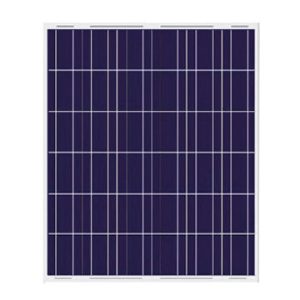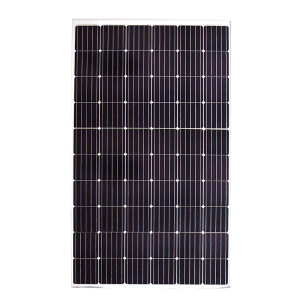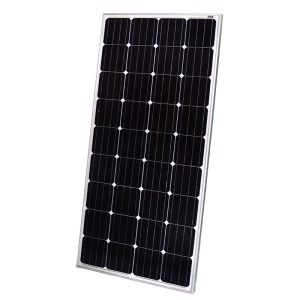In today’s world, where sustainability and environmental consciousness are paramount, the demand for eco-friendly solutions has skyrocketed. One such solution that has gained significant traction is the 10W solar water pump. This innovative technology harnesses the power of the sun to provide an efficient and environmentally friendly water pumping solution for various applications, including irrigation, pond circulation, and more.
What is a 10W Solar Water Pump?
A 10W solar water pump is a compact and energy-efficient pumping system that utilizes solar energy to move water from one location to another. [Bold the main keywords or entire sentences] These pumps are designed to operate on a low wattage of 10 watts, making them an ideal choice for various water pumping applications where a reliable and sustainable power source is required.
Solar water pumps work by converting the energy from solar panels into electrical energy, which is then used to power a direct current (DC) motor that drives the pump. The solar panels capture sunlight and convert it into electrical energy, which is stored in batteries or used directly to run the pump. This eliminates the need for traditional power sources, such as grid electricity or fossil fuels, making solar pumps an environmentally friendly and cost-effective solution.
Types of 10W Solar Pumps
10W solar pumps are available in two main types: surface pumps and submersible pumps. Each type is designed for specific applications and has its own advantages and limitations.
Surface Solar Pumps
Surface solar pumps are installed above the water source and are suitable for shallow water sources, such as ponds, streams, or open wells. These pumps are typically easier to install and maintain compared to submersible pumps. They are often used for applications like irrigation, water circulation in ponds or fountains, and livestock watering.
Submersible Solar Pumps
Submersible solar pumps, as the name suggests, are designed to be submerged in the water source, such as deep wells or bore wells. These pumps are more suitable for applications that require lifting water from greater depths. They are commonly used for irrigation in agricultural settings, residential water supply, and other applications where water needs to be drawn from deep underground sources.
Key Features and Benefits of 10W Solar Pumps
10W solar pumps offer several advantages over traditional pumping systems, making them an attractive choice for various water pumping applications.
Energy Efficiency and Cost Savings
One of the primary benefits of 10W solar pumps is their energy efficiency. By harnessing the power of the sun, these pumps eliminate the need for costly and polluting fossil fuels or grid electricity. This results in significant cost savings over the lifetime of the pump, especially in areas with limited access to reliable power sources or high electricity costs.
Eco-Friendly and Sustainable
Solar pumps are an environmentally friendly and sustainable solution for water pumping. They do not produce any greenhouse gas emissions or contribute to air pollution, making them an excellent choice for individuals and organizations committed to reducing their carbon footprint and promoting sustainable practices.
Low Maintenance and Durability
10W solar pumps have fewer moving parts compared to traditional pumps, which reduces the risk of mechanical failures and minimizes maintenance requirements. Additionally, the absence of combustion engines or complex electrical components contributes to their durability and long service life, further reducing maintenance costs.
Applications of 10W Solar Pumps
10W solar pumps have a wide range of applications, making them a versatile solution for various water pumping needs.
Irrigation and Agriculture
One of the primary applications of 10W solar pumps is in the agricultural sector for irrigation purposes. These pumps can be used to draw water from wells, ponds, or other water sources and distribute it to crops, ensuring efficient and sustainable water management practices. By utilizing solar energy, farmers can reduce their reliance on grid electricity or diesel-powered pumps, resulting in significant cost savings and a reduced environmental impact.
Pond and Water Feature Circulation
Solar pumps are commonly used for circulating water in ponds, fountains, and other water features. They help maintain a healthy ecosystem by preventing stagnation and promoting oxygenation, which is essential for aquatic life. The low-maintenance and eco-friendly nature of solar pumps make them an ideal choice for homeowners and landscapers seeking sustainable solutions for their water features.
Livestock Watering
In remote or off-grid locations, 10W solar pumps provide a reliable and cost-effective solution for watering livestock. They can be used to pump water from wells, streams, or other sources, ensuring a consistent supply of fresh water for animals. This not only improves animal health and productivity but also eliminates the need for manual water transportation, saving time and effort.
Choosing the Right 10W Solar Pump System
Selecting the appropriate 10W solar pump system is crucial to ensure optimal performance and efficiency. Several factors should be considered when choosing a solar pump system.
Sizing and Water Requirements
The first step in selecting a solar pump system is to determine your water requirements. This includes factors such as the desired flow rate, the total head (vertical distance the water needs to be lifted), and the daily water usage. Based on these requirements, you can choose a solar pump with the appropriate specifications to meet your needs.
For example, if you need to irrigate a small vegetable garden or water a small pond, a 10W solar pump with a flow rate of around 500 liters per hour (LPH) and a maximum head of 5-10 meters may be sufficient. However, if you have larger water requirements, such as irrigating a larger agricultural field or filling a large water tank, you may need a more powerful solar pump system or multiple pumps working in tandem.
Site Conditions and Solar Exposure
The amount of solar exposure and the site conditions play a significant role in the performance of a solar pump system. Factors such as the location’s latitude, average sunlight hours, and potential shading should be taken into account when sizing the solar panel array and selecting the appropriate pump.
In areas with abundant sunlight and minimal shading, a smaller solar panel array may be sufficient to power the pump. However, in regions with lower solar irradiation or frequent cloud cover, a larger solar panel array may be required to ensure consistent performance.
Pump Performance and Head Specifications
Different solar pumps have varying performance characteristics, including flow rates, maximum head (lift), and efficiency ratings. It is essential to match the pump’s specifications with your specific water requirements and site conditions to ensure optimal performance and efficiency.
For instance, if you need to lift water from a deep well or pump water over a significant distance, you’ll require a solar pump with a higher maximum head rating. Conversely, if you only need to move water over a short distance or at a lower elevation, a pump with a lower head rating may suffice.
Installation and Maintenance Tips
Proper installation and routine maintenance are crucial for ensuring the long-term performance and durability of your 10W solar pump system.
Proper Positioning and Orientation
To maximize the solar panel’s energy output, it is essential to position and orient the panels correctly. This typically involves facing the panels towards the equator (south in the northern hemisphere and north in the southern hemisphere) and adjusting the tilt angle based on your location’s latitude. Additionally, ensuring that the panels are free from shading and regularly cleaned can significantly improve their efficiency.
Routine Maintenance and Troubleshooting
Regular maintenance tasks, such as cleaning the solar panels, checking the battery connections, and inspecting the pump for any debris or wear, can help extend the lifespan of your solar pump system. Additionally, familiarizing yourself with common troubleshooting techniques can help you identify and resolve any issues that may arise.
For example, if you notice a decrease in the pump’s performance, it could be due to a clogged filter or a low battery charge. By following the manufacturer’s guidelines and performing routine maintenance, you can ensure that your solar pump system operates at peak efficiency for years to come.
Integrating Solar Pumps with Renewable Energy Systems
10W solar pumps can be integrated with other renewable energy systems to create a more comprehensive and efficient energy solution.
Combining with Solar Panels and Batteries
In some cases, additional solar panels can be added to the system to increase the energy output and power larger pumps or multiple pumps simultaneously. Batteries can also be incorporated to store excess energy generated during peak sunlight hours, allowing the pump to operate during periods of low or no sunlight.
This approach is particularly useful in applications where a consistent water supply is required, such as livestock watering or irrigation systems. By combining solar panels and batteries, you can ensure that your water pumping needs are met even during cloudy days or at night.
Hybrid Solar-Wind Pump Systems
In areas with consistent wind patterns, solar pumps can be combined with wind turbines to create a hybrid solar-wind pump system. This approach leverages both solar and wind energy sources, providing a more reliable and consistent power supply for the pump.
Hybrid systems are particularly advantageous in regions where solar or wind resources may be intermittent or variable. By combining these two renewable energy sources, you can maximize the system’s overall energy production and ensure a reliable water supply throughout the year.



